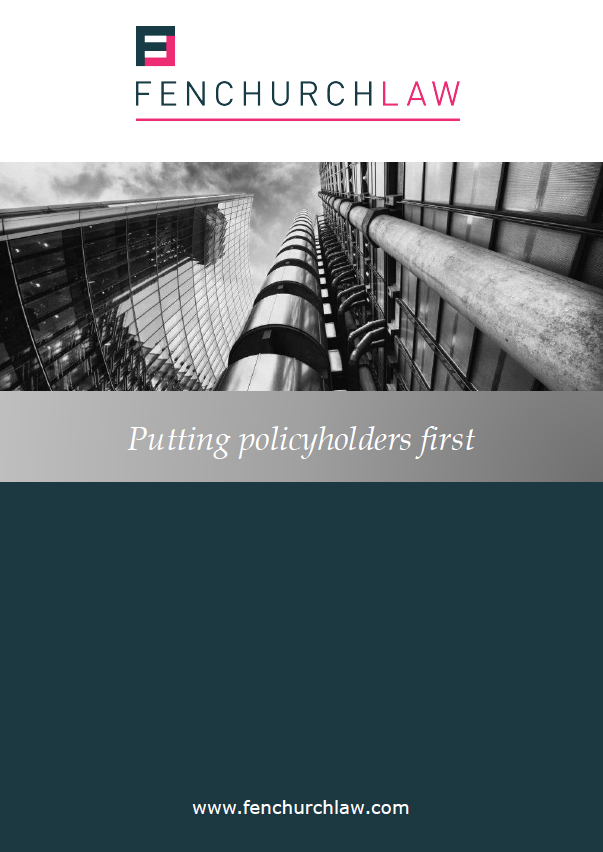
The Good, the Bad & the Ugly: 100 cases every policyholder needs to know. #5 (The Ugly). AIG v Woodman
Welcome to the latest in the series of blogs from Fenchurch Law: 100 cases every policyholder needs to know. An opinionated and practical guide to the most important insurance decisions relating to the London / English insurance markets, all looked at from a pro-policyholder perspective.
Some cases are correctly decided and positive for policyholders. We celebrate those cases as The Good.
Some cases are, in our view, bad for policyholders, wrongly decided, and in need of being overturned. We highlight those decisions as The Bad.
Other cases are bad for policyholders but seem (even to our policyholder-tinted eyes) to be correctly decided. Those cases can trip up even the most honest policyholder with the most genuine claim. We put the hazard lights on those cases as The Ugly.
At Fenchurch Law we love the insurance market. But we love policyholders just a little bit more.
#5 (The Ugly)
AIG Europe Ltd v Woodman & Ors [2017] UKSC 18
This decision represented the first time for almost 15 years in which an aggregation clause had been considered by the UK’s highest court. We have categorised it as “ugly”, not because we believe it was wrongly decided, but because it represents a missed opportunity by the Supreme Court to clarify an area which, absent that clarification, remains a likely source of disputes between policyholders and insurers.
AIG v Woodman arose out of a professional negligence claim against a firm of solicitors by 214 investors, who had invested in one or other of two developments, one in Turkey and one in Morocco. A firm of solicitors (“the Solicitors”) were instructed in respect of both developments, and were meant to have a system whereby the investors’ money was only to be released to purchase the development land once adequate security was in place.
Both developments failed. It transpired that, owing to the Solicitors’ negligence, the security had been wholly inadequate. The investors lost a total of £10m, and sued the Solicitors
The Solicitors had professional indemnity insurances with AIG, with a limit of £3m per claim. The question therefore was whether, in light of the aggregation provision in the policy (“the Aggregation Clause”), the Solicitors were facing one, two or 214 claims. The Aggregation Clause, taken from the SRA Minimum Terms & Conditions, aggregated all claims arising from:
“(i) one act or omission;
(ii) one series of related acts of omissions;
(iii) the same act or omission in a series of related matters or transactions;
(iv) similar acts or omissions in a series of related matters or transactions …”
It was limb (iv) which was relevant here.
At first instance, the Commercial Court held, and the parties subsequently accepted, that each claim had arisen out of a similar act/omission. However, that still begged the question of whether each such similar act/omission had occurred “in a series of related matters or transactions”.
The decisions below
At first instance, the Commercial Court held that the Aggregation Clause required the transactions to be interdependent in order for them to be “related”. On that basis, the claims did not aggregate and there was ample cover to satisfy the investors’ claims.
The Court of Appeal disagreed. It said that the requirement for interdependence was going too far. Instead, what was necessary, for transactions to be “related”, was an “intrinsic” relationship – a relationship of some kind between the transactions relied on, rather than a relationship with some outside connecting factor, even if that extrinsic relationship were common to the transactions. However, the Court of Appeal declined to say whether there was, indeed, an intrinsic relationship here between the various transactions, and decided to remit that issue to the Commercial Court.
The Supreme Court
The Supreme Court allowed AIG’s appeal, and held that the Court of Appeal’s requirement for an intrinsic relationship between the transactions was “neither necessary nor appropriate”, and represented an unwarranted gloss on the terms of the Aggregation Clause. Instead, it held – somewhat lamely, it might be thought – that the word “related” simply required a “real connection” between the transactions, “or in other words they must in some way fit together”.
On that basis, it was held that all the transactions involving the Morocco development were sufficiently inter-connected, and, likewise, all those involving the Turkey development; but it was not the case (as AIG had submitted) that all the transactions in respect of both developments were inter-related.
There were accordingly two claims and two indemnity limits, and a total of £6m available as compensation for the investors.
All this, however, provides very little guidance to policyholders and insurers in dispute over whether transactions are or are not “related”, other than where the factual situation is very similar to that in Woodman. During the hearing at the Supreme Court, AIG’s QC had come close to arguing that “related” should not be given any gloss or interpretation, but that instead each time the parties to an insurance contract would themselves have to resolve, or require a court to determine, whether the transactions in question were “related”.
Lord Mance’s response was dismissive:
“Just to leave the clause as it is … is not going to help anyone very much, is it? It is like saying ‘Brexit is Brexit’.”
It is ironic, therefore, that for the Supreme Court simply to have held that “related” requires some “real connection” was almost as unhelpful.
Other news
Fenchurch Law expands into Scandinavia with Denmark office launch
31 October 2024
Fenchurch Law, the award winning international law firm working exclusively for insurance policyholders and brokers,…



